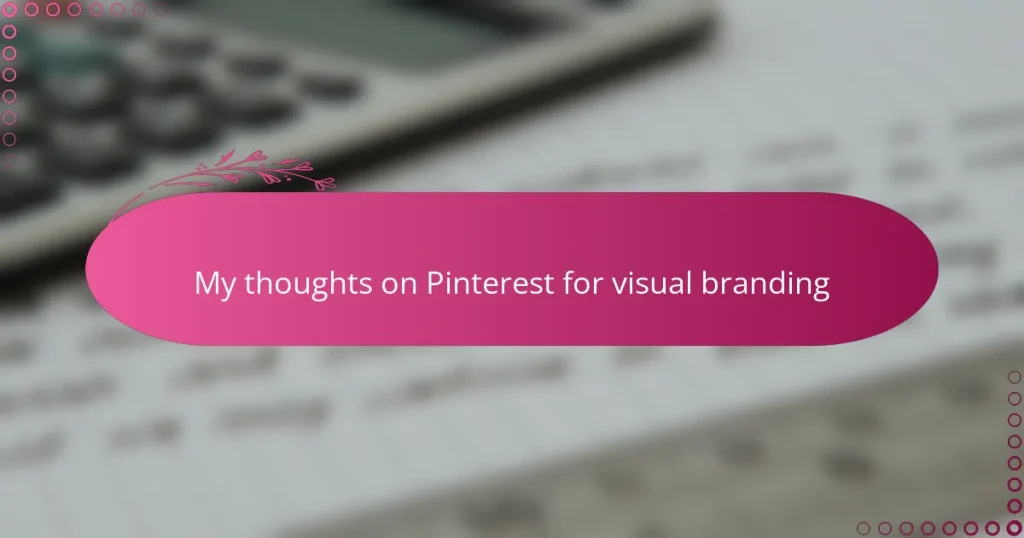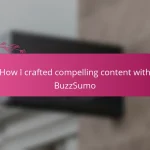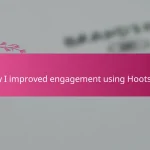Key takeaways
- Visual branding creates emotional connections and conveys a brand’s essence through consistent imagery.
- Pinterest serves as a powerful marketing tool by allowing brands to engage with users actively seeking inspiration.
- Consistent and cohesive visual storytelling on Pinterest builds trust and enhances audience recognition.
- Effective Pinterest branding involves focusing on a unified aesthetic, niche-specific content, and using descriptive captions for discoverability.
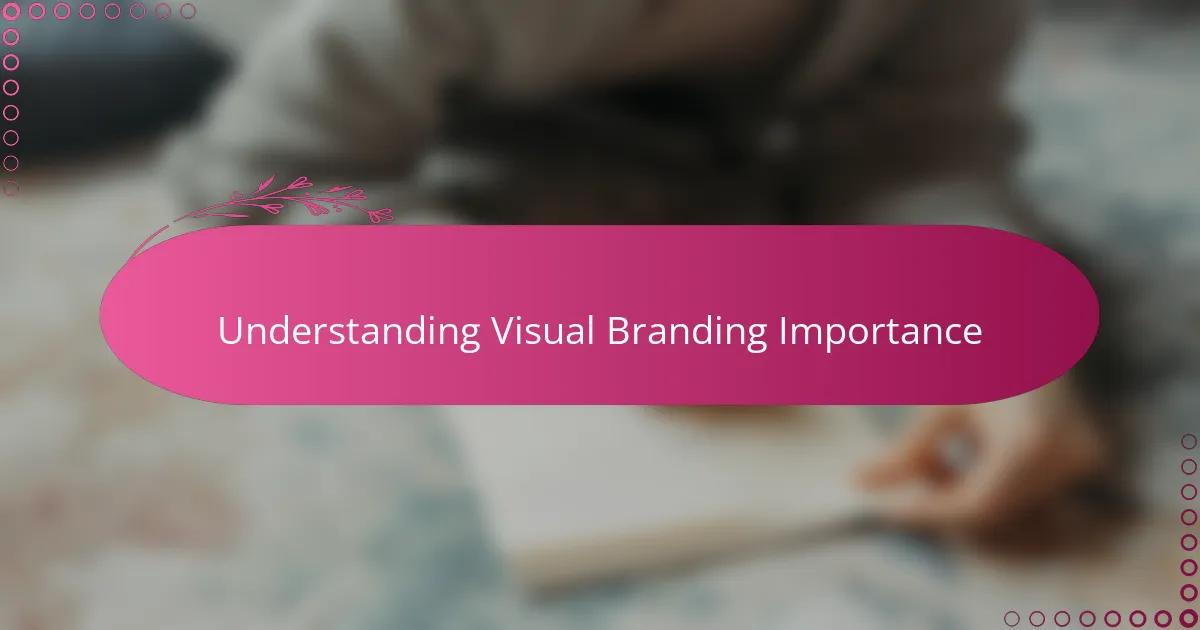
Understanding Visual Branding Importance
Visual branding is more than just choosing colors or fonts; it’s about creating an emotional connection with your audience. From my experience, visuals can instantly communicate the essence of a brand, often before a single word is read. Have you ever noticed how certain logos or images just stick with you? That’s the power of visual branding at work.
I remember when I first realized how important consistent visual branding was. A client’s scattered and mismatched images confused their audience, and sales suffered. Once we streamlined their visual elements, the brand felt unified and trustworthy, which directly impacted engagement. It’s that subtle feeling of reliability that strong visual branding fosters.
Why does visual branding matter so deeply? Because humans are inherently visual creatures. Our brains process images exponentially faster than text, making visuals the quickest way to communicate identity and values. This understanding has influenced how I approach marketing strategies, always prioritizing a clear, compelling visual story.
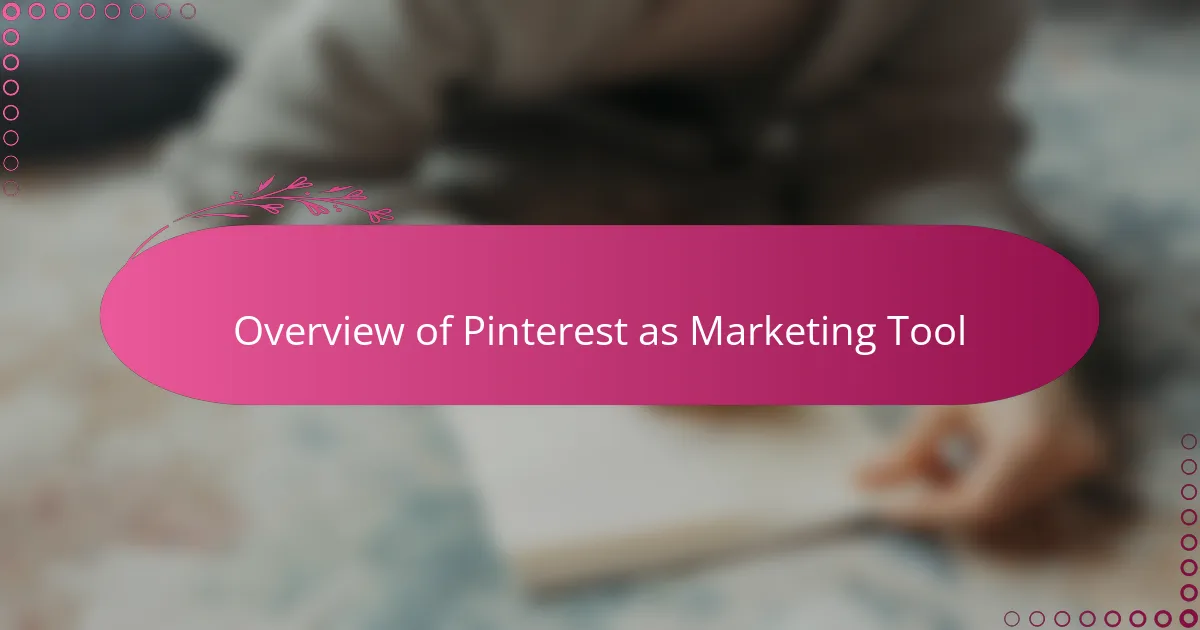
Overview of Pinterest as Marketing Tool
Pinterest stands out to me as a remarkable marketing tool primarily because it’s designed for discovery through visuals. When I first explored Pinterest for a campaign, I was struck by how naturally users engage with imagery, almost like flipping through a curated magazine that’s personalized for their tastes. Doesn’t that kind of interaction feel more authentic compared to traditional ads?
What’s fascinating is how Pinterest functions both as a search engine and a social network, giving brands the unique chance to be found by people actively seeking inspiration. In my experience, this means you’re connecting with an audience already in the mood to explore ideas, which makes your visual branding efforts more impactful. It’s a mindset shift from pushing products to offering solutions and style.
I’ve noticed that consistent, well-crafted pins can significantly boost a brand’s presence over time. It’s not about instant virality but building a visual narrative that gradually resonates with the Pinterest community. Have you ever paused to think how your pins tell your brand’s story? For me, that storytelling aspect is where Pinterest’s marketing power truly lies.
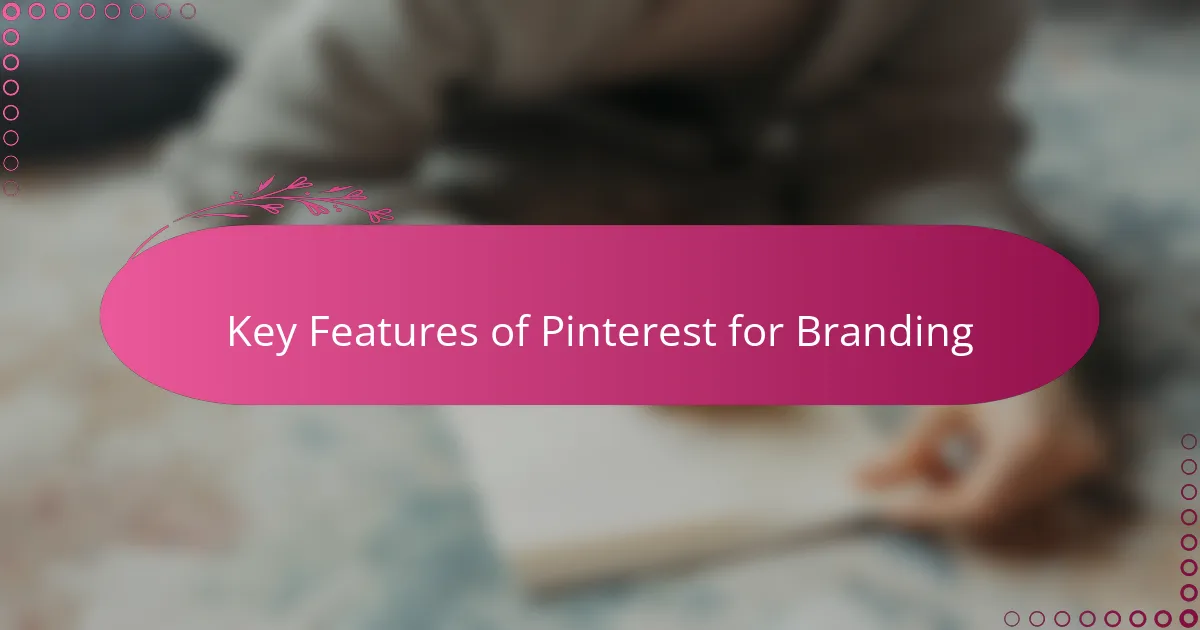
Key Features of Pinterest for Branding
One feature of Pinterest that really stands out for branding is its visual search capability. I found this tool incredibly helpful because it allows users to discover products or ideas simply by uploading an image or clicking on a part of a pin. Have you ever tried searching by image and been surprised by how spot-on the suggestions were? That seamless visual discovery makes it easier to connect your brand with audiences who are genuinely interested.
Another aspect I appreciate is Pinterest’s ability to organize content through boards and sections. From my experience, this structure isn’t just about tidiness — it helps brands tell a cohesive story by grouping related images and ideas in one place. When I helped a client create themed boards, it was amazing to see how much clearer their brand message became for viewers, turning casual browsers into engaged followers.
Finally, Pinterest’s rich pins deserve a shoutout. These pins include extra information like pricing, availability, or recipes right on the pin itself. I’ve noticed that this added context makes users feel more confident and informed about products or ideas, which can boost trust and conversions. Isn’t it refreshing to encounter marketing that feels helpful rather than pushy? That’s exactly what rich pins deliver.
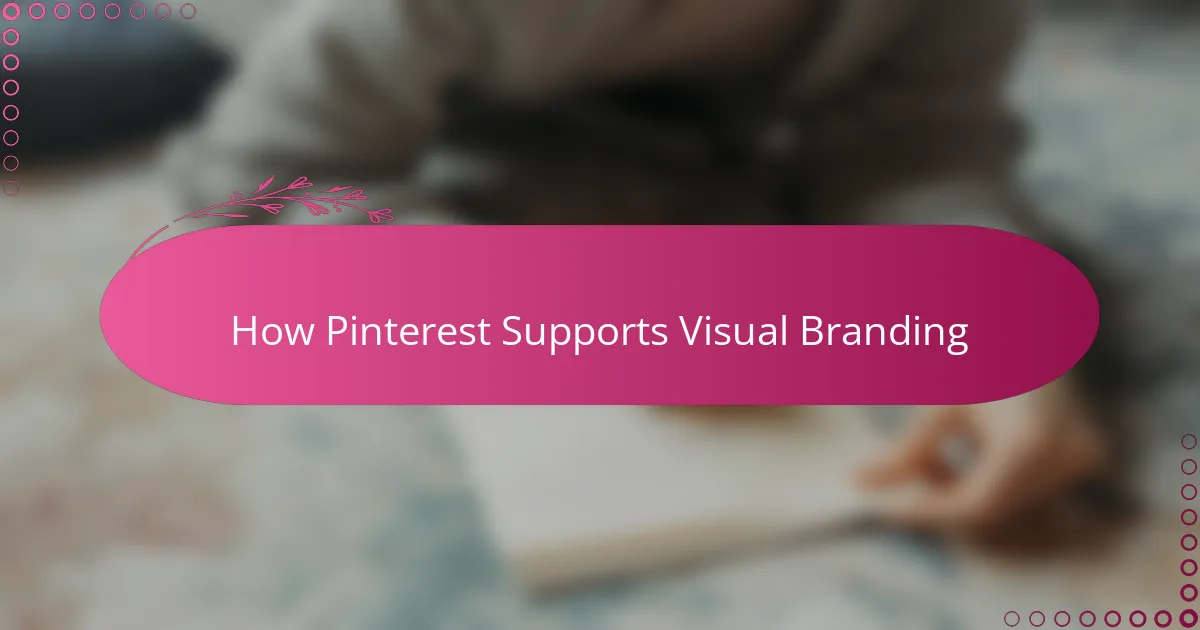
How Pinterest Supports Visual Branding
Pinterest truly excels at supporting visual branding by offering a platform where brands can showcase their identity through carefully curated images. From my experience, this kind of visual storytelling lets a brand’s personality shine in ways that words alone often can’t capture. Have you ever noticed how browsing Pinterest feels like walking through a gallery that’s tailored specifically to your interests? That’s exactly the environment brands can leverage to create deep emotional connections.
One thing I value about Pinterest is how its format encourages consistency. When I worked with a business trying to refine its online presence, we used Pinterest boards to align their visuals—color schemes, styles, moods—so their brand message became unmistakably clear. This consistency builds trust because users begin to recognize and anticipate the kind of experience the brand delivers.
Moreover, Pinterest’s discovery tools empower brands to reach audiences who are already looking for inspiration, not just being passively marketed to. I find this incredibly powerful because it means your visuals aren’t just floating out there randomly—they land in front of people who genuinely care. Isn’t that the most effective kind of branding?
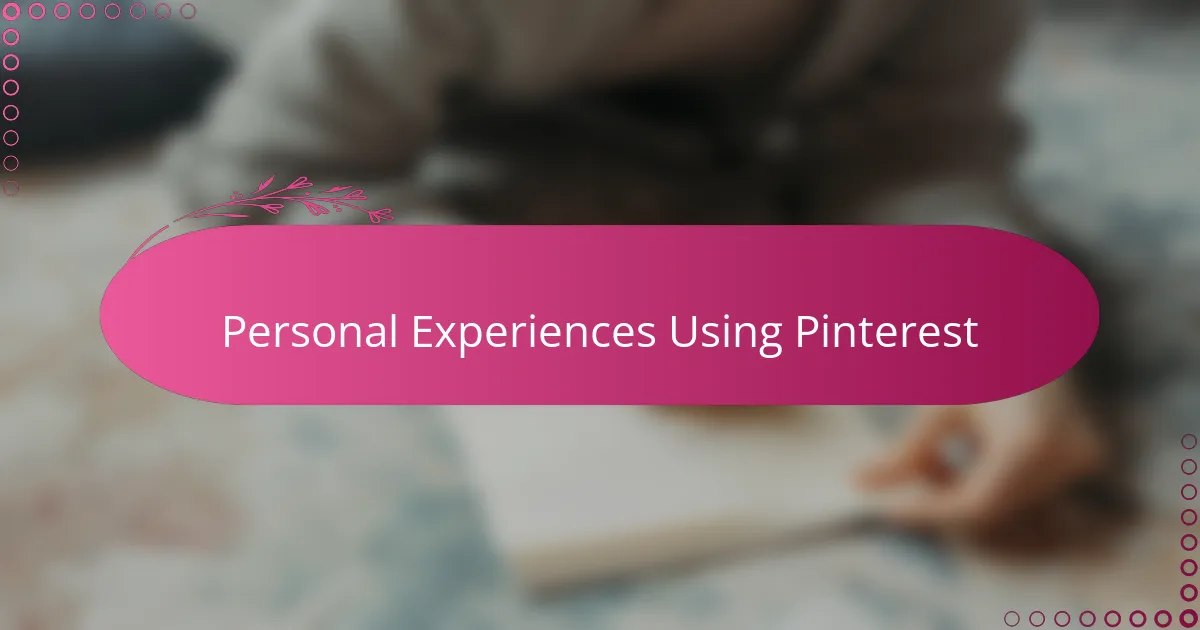
Personal Experiences Using Pinterest
When I first started using Pinterest for my own projects, I was amazed by how effortlessly it helped me organize and visualize ideas. It wasn’t just about pinning pretty images; it became a creative space where I could really shape a mood board that reflected my brand’s essence. Have you ever experienced that moment when a collection of visuals suddenly clicks and tells a story? That’s exactly what Pinterest did for me.
On several occasions, I noticed that sharing pins consistently sparked conversations and connections I hadn’t anticipated. It felt like my audience was responding not just to my products, but to the lifestyle and aesthetic I portrayed. That emotional engagement was something I struggled to achieve through other channels. Doesn’t it feel rewarding when your brand’s personality actually resonates this deeply?
One small but memorable win came when a client’s Pinterest strategy led to a steady increase in followers who genuinely cared about their niche. Watching those numbers grow day by day was satisfying, but what mattered more was seeing how their curated visuals built trust and made the brand feel approachable. It reinforced for me that Pinterest isn’t about quick wins—it’s about nurturing a lasting visual relationship.
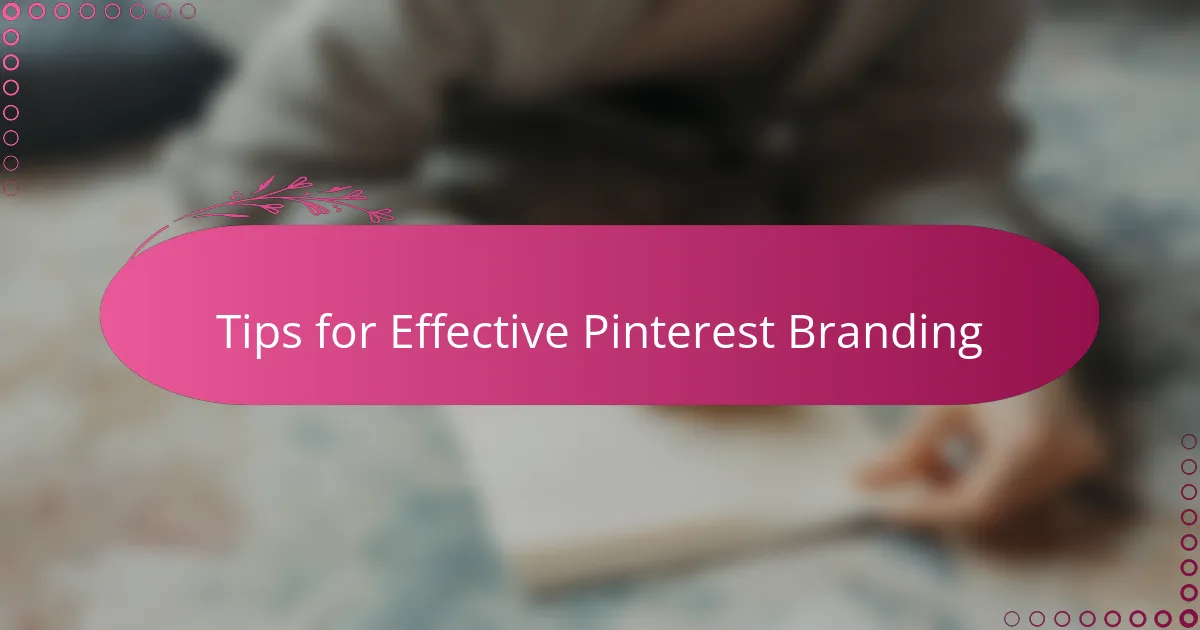
Tips for Effective Pinterest Branding
A key tip I’ve learned for effective Pinterest branding is to focus on consistency. When your pins share a unified color palette, style, or mood, it’s like giving your audience a visual signature to recognize you by. Have you ever scrolled through a feed where every image looks like it belongs together? That seamless vibe draws me in every time, and I’ve seen how it boosts followers who come back for that familiar feel.
Another strategy that worked well in my experience is creating niche-specific boards that speak directly to your target audience’s interests. Instead of scattering pins all over the place, narrowing your content to themes helps people quickly understand what your brand stands for. I remember a client who revamped their boards to focus on lifestyle elements connected to their products—the result was not just more pins saved, but deeper engagement because viewers felt the brand truly “got” them.
Lastly, never underestimate the power of captions and keywords on Pinterest. Pinterest is part social network, part search engine, so descriptive, thoughtful captions make your pins discoverable to those actively searching for inspiration. I often ask myself: am I telling a story through every pin? That little extra effort can mean the difference between being lost in the crowd or standing out as a go-to source of inspiration.
